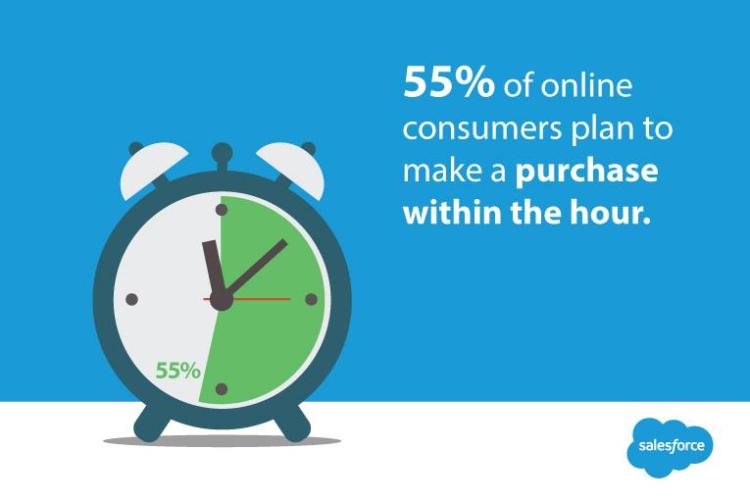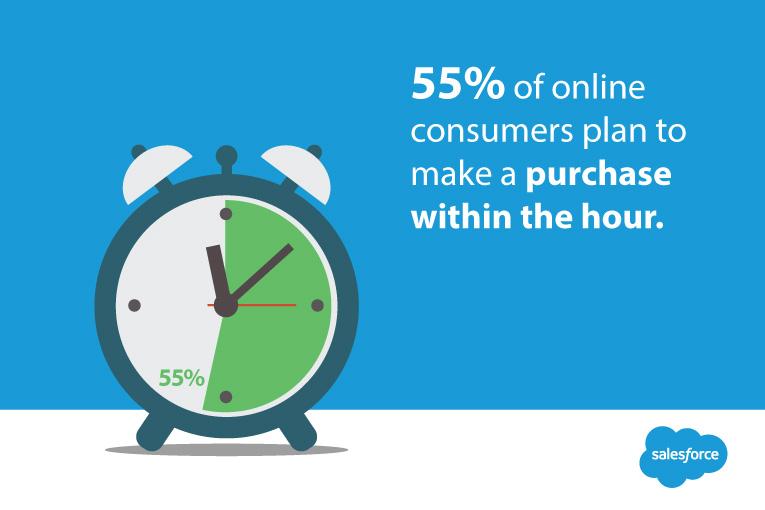6 Effects of Technology on Selling: How Tech Has Streamlined Sales



Technology is constantly evolving, and businesses are becoming more and more dependent on technology to run their businesses efficiently. Here are just some of the ways technology has changed business for the better; by streamlining sales techniques and the sales process. Gordon Moore predicted

Stuart Leung
Technology is constantly evolving, and businesses are becoming more and more dependent on technology to run their businesses efficiently. Here are just some of the ways technology has changed business for the better; by streamlining sales techniques and the sales process.
Gordon Moore predicted back in the mid-1960s that each new technological advancement would pave the way for newer and better advancements at an ever-increasing rate. Moore’s Law, as it came to be known, suggests that the number of transistors in an integrated circuit is able to approximately double every year.
Technology has outgrown Moore’s original predictions, but the basic premise of his theory remains the same–computing power in new technology grows exponentially. Technology is constantly reinventing and improving, and the world is being constantly reinvented around it.
As of December 2014, a staggering 42.3% of the world had access to the internet. And, of those who use the internet, approximately 80% own a smartphone. It’s estimated that the digital universe will grow from the 3.2 zettabytes it contains today to encompass approximately 40 zettabytes of data within the next six years (one zettabyte is equal to approximately one billion terabytes).
Technology’s Impact on Sales
Technology is transforming businesses and disrupting entire industries. One of those industries that has been heavily affected is sales. From prospecting to closing, today’s mobile, social, big data, and cloud technologies are revamping the sales process in ways that would have been unthinkable only a few decades ago. As a result, many sales organizations are embracing new technologies to drive productivity, profitability, and competitive advantage to revamp the sales process .
With that in mind, here’s a look at some of the technological tools organizations are using to streamline the selling process:
1. Big Data: In today’s world, competitive advantage for sales organizations depends largely upon the ability to successfully capture, manage, and analyze massive volumes of customer data that contains insights into customer behaviors and buying habits. Despite this, the average company only analyzes roughly 12% of the data that they have available.This is where “big data” technology comes in.
Using big data analytics tools, sales organizations can now manage prospecting, a critical step in the sales process. Traditionally, prospecting (finding and qualifying potential customers with specific needs and wants) has been a time and labor-intensive process. Now, through the use of analytics and customer data models, organizations can not only identify potential customers, but more accurately predict which leads from B2C or B2B lead generation efforts are likely to become clients. This gives the sales team a clearer idea of where to focus their efforts.
Analytics also help organizations determine which customers to target, how to use profiles to identify lookalike customers and which buyers are most likely to respond to different messages and offers. In short, big data analytics tools help organizations focus their sales efforts on the most promising and profitable activities and customers.
2. Social Platforms: The explosion of social technology has given rise to a number of social media platforms for attracting and engaging new customers, a vital step in getting a customer into the sales funnel. Social media platforms provide opportunities for companies to “shake hands” with customers, engaging them in conversations about products and services for valuable insights that could lead to a sale. Unlike conventional sales, social media makes it possible to shake millions of hands from across the entire world all at once.
Today’s customers are more connected than ever due to social media platforms. Statistics show that a majority are turning to peer recommendations and reviews on social media as part of their product research—in fact, for the average customer, peer recommendations carry 10 times the weight of recommendations from salespeople. Even more revealing is the fact that most buyers have all but completed their sales journey before ever contacting a seller. Organizations can follow this trail of digital breadcrumbs from prospective buyers on social media, and better target potential customers at just the right point in the decision making process.
Customer feedback on social media sites also helps businesses refine and shape their messages and sales tactics to ensure greater success in the future. Social platforms offer a unique advantage for sales teams, and studies suggest that 78% of sales professionals who use social media consistently outsell their peers who don’t.
3. Sales Force Automation Systems: Statistics show that businesses without automation spend 71 percent of their time and resources planning and defining business processes. The same holds true for sales organizations. Selling requires a number of tedious, time-consuming, and repetitive tasks, such as scheduling sales appointments, sending follow-up emails, and updating sales opportunities(all of which reduce productivity and profitability).
Sales Force Automation (SFA) technology solutions automate many tasks, freeing up sales employees to focus on activities that generate more sales and revenue. SFA allows sales managers to keep their teams up to date on current and new products and services. With SFA, managers can also have instant access to activities of individual sales employees, sales figures, opportunities, customer complaints, and other data used to determine sales success. Armed with information provided in real-time, managers can take action and make adjustments quickly to optimize efforts.
4. Cloud-based CRM Technology: Customer Relationship Management systems are powerful tools designed to give organizations a holistic view of the customer relationship by integrating marketing, sales, and customer support.
While traditional onsite CRM software has their merits, cloud technology takes CRM to a whole new level by freeing up employees from onsite computers and servers. When CRM data is stored in the cloud, it can be accessed directly from anywhere and at anytime.
When deployed correctly, a CRM presents a huge advantage for sales employees, as it allows them to get fast and accurate insights on what customers are doing, what they’re drawn to, and when they are mostly likely to buy. Armed with up-to-date, relevant information and the ability to contact customers and prospects while on the go, a sales team becomes more agile, effective, and productive. Thanks to the cloud, organizations can take advantage of software packages that integrate SFA and CRM into a single, cost-effective solution.
As for investment costs, the average return on investment for CRM tools is $5.60 for every $1.00 spent.
5. Mobile technology: The proliferation of mobile devices, such as smartphones and tablets, has changed many aspects of the selling process forever. For customers, the ability to research, evaluate and purchase products and services online using this technology has transformed the buying experience. Marketers and sales teams should take that into account, since research shows 93% of consumers who use their mobile device to research prospective products and services end up making a purchase.

This mobile explosion presents a great opportunity to gain competitive advantage through the use of mobile devices in the field. Combined with the use of a cloud-based CRM platform,employees have easy, immediate, and remote access to critical customer and opportunity data. Mobile communication and collaboration tools also enable field employees to work with real-time data, and update and edit customer and prospect information in the moment rather than waiting until they return to the office.
Mobile technology gives salespeople instant access to product specs and other tools that increase the effectiveness of their sales pitches, resulting in higher closing rates and a better customer experience. And, when it’s contract time, mobile access makes all documents readily available for the closing process.
6. Bring Your Own Device (BYOD): To fully capitalize on the power of mobile technology, many organizations are adopting Bring Your Own Device (BYOD) practices among their sales force. Along with eliminating the substantial costs associated with purchasing personal mobile devices for sales teams, BYOD strategies bring a number of benefits to the sales process.
Through the utilization of the personal mobile devices (that individual salespeople are already comfortable with), team members can easily access resources they need to more effectively collaborate with colleagues and customers regardless of their location. BYOD allows companies to provide important sales training, strategy updates, and field support to team members, resulting in a more empowered and productive sales force. In fact, certain organizations that implemented a BYOD policy have seen an increase in employee productivity of approximately 20%.
Individual personalities and selling styles of employees are important to the selling process. BYOD helps encourage personal expression by allowing employees to bring the devices they prefer using into the work environment. That being said, organizations should institute and enforce BYOD security policies to ensure that the use of personal devices for work purposes doesn’t end up compromising sensitive corporate and customer data.
A Growing Divide
Technology is transforming the world of sales. Going forward, only organizations that use powerful tools and technologies such as big data, social media, mobile technologies, and the cloud to streamline the sales process will remain profitable and competitive. Those who choose to retain outdated sales techniques may ultimately cease to exist.

Fortunately, the same technology being embraced by sales teams is also helping drive business from customers. Customers have eagerly embraced new purchasing mediums offered by the newest technological advancements. As the technology continues to grow, so too will the sales. Unlike many of those who window shop in malls and department stores, 55% of consumers who browse online plan to commit to a purchase within an hour.
As we move even further into the digital age, we need to recognize the almost-universal effect that our technology is having on our businesses. Otherwise, we may find our organizations left behind. Even though we can count on technology to constantly improve, the only thing keeping individual companies and businesses from falling behind is the willingness to improve as well.





















